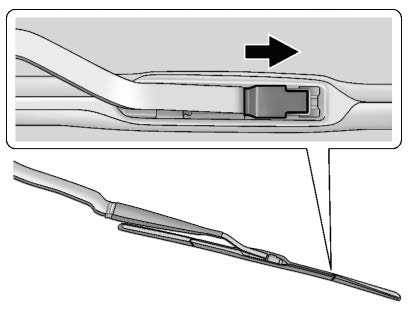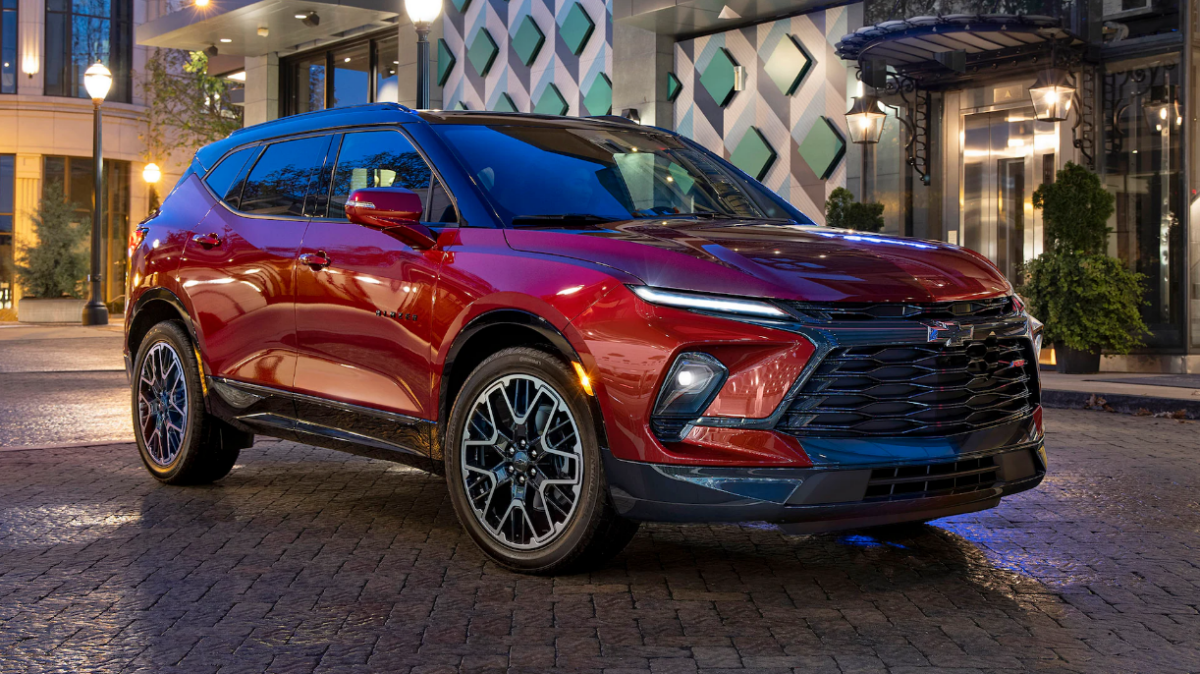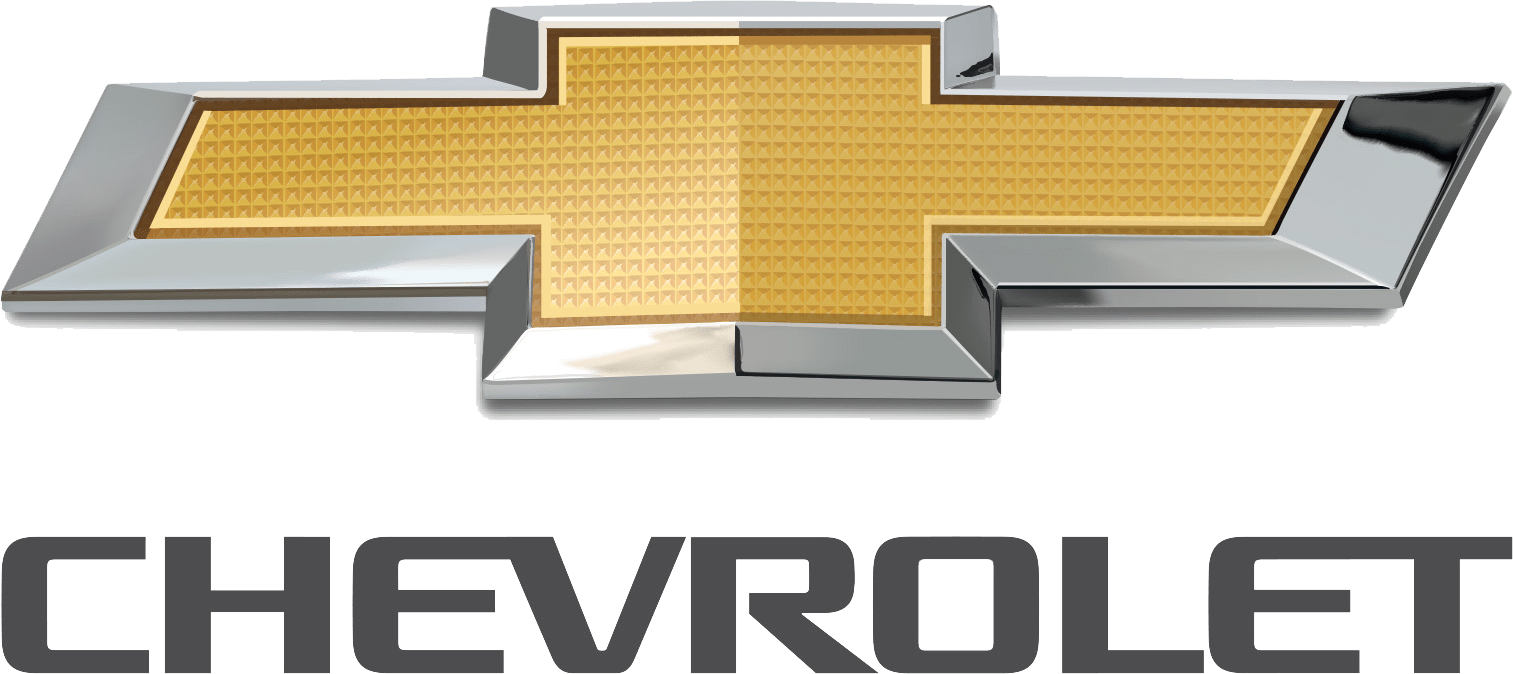2023 Chevrolet Blazer Brake Fluid Maintenance User Manual
Welcome to the 2023 Chevrolet Blazer Brake Fluid System guide, where you can learn how to drive safely and precisely. The brakes are an important part of any car, and the Chevy Blazer 2023 is no different. As car technology keeps getting better, it’s more important than ever to understand and take care of important parts like the brake fluid system for both better performance and passenger safety. This detailed guide goes into great detail about the 2023 Blazer’s brake fluid system, including what it does, how to maintain it, and the parts that make it up. From fluid levels to possible problems, we give you the information you need to make smart choices about how to take care of and improve this important part of your Chevrolet Blazer. Let us take you on a tour of the 2023 Chevrolet Blazer Brake System care, whether you’re an experienced car fan or this is your first Blazer.
2023 CHEVROLET BLAZER Review, Price, Features And Mileage (Brochure)
Brake Fluid
Chevy Blazer braking guide
The brake master cylinder reservoir is filled with GM-approved DOT 4 brake fluid level check as indicated on the reservoir cap.
Checking Brake Fluid
With the vehicle in P (Park) on a level surface, the brake fluid level should be between the minimum and maximum marks on the brake fluid reservoir.
There are only two reasons why the brake fluid level in the reservoir may go down:
- Normal brake lining wear. When new linings are installed, the fluid level goes back up.
- A fluid leak in the brake hydraulic system.
Have the brake hydraulic system fixed. With a leak, the brakes will not work well.
Always clean the brake fluid reservoir cap and the area around the cap before removing it. Do not top off the brake fluid. Adding fluid does not correct a leak. If fluid is added when the linings are worn, there will be too much fluid when new brake linings are installed. Add or remove fluid, as necessary, only when work is done on the brake hydraulic system.
Warning
If too much brake fluid is added, it can spill on the engine and burn, if the engine is hot enough. You or others could be burned, and the vehicle could be damaged. Add brake fluid only when work is done on the brake hydraulic system.
When the brake fluid falls to a low level, the brake warning light comes on. See Brake System Warning Light 0 102. Brake fluid absorbs water over time which degrades the effectiveness of the brake fluid. Replace brake fluid at the specified intervals to prevent increased stopping distance. See Maintenance Schedule 0 317.
What to Add
Use only GM-approved DOT 4 brake fluid from a clean, sealed container. See Recommended Fluids and Lubricants 0 321.
Warning
The wrong or contaminated brake fluid could result in damage to the brake system. This could result in the loss of braking leading to a possible injury. Always use the proper GM-approved brake fluid.
Caution
If the brake fluid is spilled on the vehicle’s painted surfaces, the paint finish can be damaged. Immediately wash off any painted surface.
Battery – North America
The original equipment battery is maintenance-free. Do not remove the cap and do not add fluid. Refer to the replacement number on the original battery label when a new battery is needed. For replacement of the battery, see your dealer.
Chevrolet Blazer Stop/Start System Owner’s Manual
The vehicle has a Stop/Start system to shut off the engine to help conserve fuel. See Stop/Start System 0 194. It has an Absorbed Glass Mat (AGM) 12-volt battery. Installation of a standard 12-volt battery will result in reduced 12-volt battery life. When using a 12-volt battery charger on the 12-volt AGM battery, some chargers have an AGM battery setting on the charger. If available, use the AGM setting on the charger, to limit charge voltage to 14.8 volts.
Warning
Battery posts, terminals and related accessories can expose you to chemicals including lead and lead compounds, which are known to the State of California to cause cancer and birth defects or other reproductive harm. Wash hands after handling. For more information go to www.P65Warnings.ca.gov
Vehicle Storage
Warning
Batteries have acid that can burn you and gas that can explode. You can be badly hurt if you are not careful. See Jump Starting – North America 0 301 for tips on working around a battery without getting hurt.
Infrequent Usage: Remove the black, negative (−) cable from the battery to keep the battery from running down.
Extended Storage: Remove the black, negative (−) cable from the battery or use a battery trickle charger.
All-wheel drive Transfer Case
Under normal driving conditions, transfer case fluid does not require maintenance unless there is a fluid leak or unusual noise. If required, have the transfer case serviced by your dealer.
Park Brake and P (Park) Mechanism Check
Warning
When you are doing this check, the vehicle could begin to move. You or others could be injured and property could be damaged. Make sure there is room in front of the vehicle in case it begins to roll. Be ready to apply the regular brake at once should the vehicle begin to move.
Park on a fairly steep hill, with the vehicle facing downhill. Keeping your foot on the regular brake, set the parking brake.
- To check the parking brake’s holding ability: With the engine running and the transmission in N (Neutral), slowly remove foot pressure from the regular brake pedal. Do this until the vehicle is held by the parking brake only.
- To check the P (Park) mechanism’s holding ability: With the engine running, shift to P (Park). Then release the parking brake followed by the regular brake.
Contact your dealer if service is required.
2023 CHEVROLET BLAZER Review, Price, Features And Mileage (Brochure)
Chevy Windshield Replacement
Windshield wiper blades should be replaced periodically. See Maintenance Schedule 0 317.
Replacement blades come in different types and are removed in different ways. For proper type and length, see Maintenance Replacement Parts 0 322.
Caution
Allowing the wiper arm to touch the windshield when no wiper blade is installed could damage the windshield. Any damage that occurs would not be covered by the vehicle warranty. Do not allow the wiper arm to touch the windshield.
Front Wiper Blade Replacement
To replace the wiper blade:
- Pull the wiper assembly away from the windshield.
- Lift up on the latch in the middle of the wiper blade where the wiper arm attaches.
With the latch open, pull the wiper blade down toward the windshield far enough to release it from the J-hooked end of the wiper arm. - Remove the wiper blade.
- Reverse Steps 1–3 for wiper blade replacement.
Rear Wiper Blade Replacement
Chevy Blazer owner’s guide
The rear wiper blade and wiper arm have a cover for protection.
To remove the cover:
- Slide a plastic tool under the cover and push upward to unsnap.
- Slide the cover toward the wiper blade tip to unhook it from the blade assembly.
- Remove the cover.
- After the wiper blade replacement, ensure that the cover hook slides into the slot in the blade assembly.
- Snap the cover down to secure it.
To replace the wiper blade:
- Lift the wiper arm away from the windshield.
- Push the release lever (2) to disengage the hook and push the wiper arm (1) out of the blade assembly (3).
- Push the new blade assembly securely on the wiper arm until the release lever clicks into place.
FAQ’s
The 2023 Chevrolet Blazer typically uses DOT 3 or DOT 4 brake fluid, as recommended by the manufacturer.
It’s advisable to check the brake fluid level in the 2023 Chevrolet Blazer during routine maintenance inspections, such as oil changes or tire rotations. Additionally, visually inspecting the brake fluid reservoir periodically is recommended.
The brake fluid reservoir in the 2023 Chevrolet Blazer is typically located near the firewall of the engine compartment. It’s a translucent plastic reservoir with markings indicating the maximum and minimum fluid levels.
To check the brake fluid level in the 2023 Chevrolet Blazer, visually inspect the fluid level through the side of the reservoir. Ensure the fluid level is between the maximum and minimum markings.
If the brake fluid level is low in the 2023 Chevrolet Blazer, carefully add the appropriate type of brake fluid to the reservoir until it reaches the recommended level. Avoid overfilling, as it can lead to brake system issues.
When handling brake fluid for the 2023 Chevrolet Blazer, wear protective gloves and avoid spilling fluid on painted surfaces, as it can damage the paint. Additionally, store brake fluid in a tightly sealed container to prevent contamination.
Signs of brake fluid contamination or degradation in the 2023 Chevrolet Blazer may include a dark or cloudy appearance of the fluid, spongy brake pedal feel, reduced braking performance, or illuminated brake warning lights.
To inspect the condition of the brake fluid in the 2023 Chevrolet Blazer, visually examine the fluid for any discolouration, cloudiness, or presence of debris.
Neglecting brake fluid maintenance in the 2023 Chevrolet Blazer can lead to brake system issues such as decreased braking performance, corrosion of brake components, and potential brake system failure, compromising vehicle safety.
Properly dispose of old brake fluid from the 2023 Chevrolet Blazer by taking it to a certified automotive service center or hazardous waste disposal facility. Do not pour brake fluid down the drain or dispose of it with regular household waste.
It’s not recommended to use aftermarket brake fluid additives in the 2023 Chevrolet Blazer, as they may contain chemicals that could potentially harm the brake system components or degrade fluid performance.
FAQ’s
View Full User Guide: Chevrolet Blazer 2023 User Guide | Auto User Guide
2023 CHEVROLET BLAZER Specs, Price, Features, Mileage (Brochure)
How To Control Engine Temperature: 2023 Chevrolet Blazer Guide


